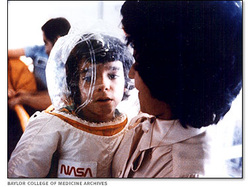


Here, we report the virological and molecular characterization of the sequential isolates and the immunological parameters of the patient in relation to poliovirus clearance. Prolonged shedding of neurovirulent iVDPVs can potentially cause poliomyelitis outbreaks when the level of population immunity is reduced ( 5, 11, 12).Īs part of our study on poliovirus infection in immunodeficient children in India, we had identified and reported a severe combined immunodeficient (SCID) patient with asymptomatic and prolonged iVDPV infection who abruptly stopped poliovirus shedding after 2 years of continuous excretion ( 13). These patients may excrete iVDPVs for a long time (reported up to >28 years), even in the absence of any clinical symptom ( 9, 10). Patients with primary immunodeficiency (PID) are at ~3,000-fold higher risks of developing VDPV infection ( 7, 8). By definition, VDPV1 and VDPV3 show >1% and VDPV2 shows >0.6% nucleotide divergence in viral protein 1 (VP1) coding region, as compared with their parental OPV strains ( 6). In polio-free countries, there is a risk of importation of wild-type poliovirus and vaccine-derived poliovirus (VDPV) that has mutated from OPV-associated strains and potentially regained neurovirulence ( 4, 5).

Despite the effectiveness and benefits of OPV administration to eradicate wild polioviruses, OPV use comes with some risks ( 1, 3). Oral poliovirus vaccine (OPV) usage has decreased the annual incidence of wild-type poliomyelitis >99.9% worldwide ( 1, 2). The study highlights the need to screen all the patients with combined immunodeficiency for poliovirus excretion and intermittent follow-up of their immune parameters if found positive, in order to manage the risk of iVDPV excretion in the polio eradication endgame strategy. Our findings suggest that in the absence of B cells and sufficiently activated T/NK cells, macrophages and other T cells may produce auto-inflammatory conditions by TLR/RLR ligands expressed by previous/ongoing bacterial or viral infections to clear VDPV infection. Occurrence of an episode of norovirus diarrhea associated with increased activated oligoclonal cytotoxic T cells, inverse CD4:CD8 ratio, significantly elevated pro-inflammatory cytokines, and subsequent clearance of the poliovirus suggests a possible link between inflammatory diarrheal illness and clearance of iVDPV. Herein, we report a patient with severe combined immunodeficiency (SCID), identified as a prolonged serotype 3 iVDPV (iVDPV3) excreter with 13 VDPV3 isolates and a maximum of 10.33% nucleotide divergence, who abruptly cleared infection after a period of 2 years. The emergence of immunodeficiency-associated vaccine-derived polioviruses (iVDPV) from children with primary immunodeficiency disorders poses a threat to the eradication program. 3Bai Jer Bai Wadia Childrens Hospital, Mumbai, India.2ICMR-National Institute of Immunohaematology, Indian Council of Medical Research, KEM Hospital, Mumbai, India.1ICMR-National Institute of Virology, Mumbai Unit, Formerly Enterovirus Research Centre, Indian Council of Medical Research, Mumbai, India.Madhu Chhanda Mohanty 1 *, Manisha Ranjan Madkaikar 2, Mukesh Desai 3, Jahnavi Aluri 2, Swapnil Yashwant Varose 1, Prasad Taur 3, Deepa Kailash Sharma 1, Uma Prajwal Nalavade 1, Sneha Vijay Rane 1, Maya Gupta 2, Snehal Shabarish 2, Aparna Dalvi 2 and Jagadish Mohanrao Deshpande 1


 0 kommentar(er)
0 kommentar(er)
